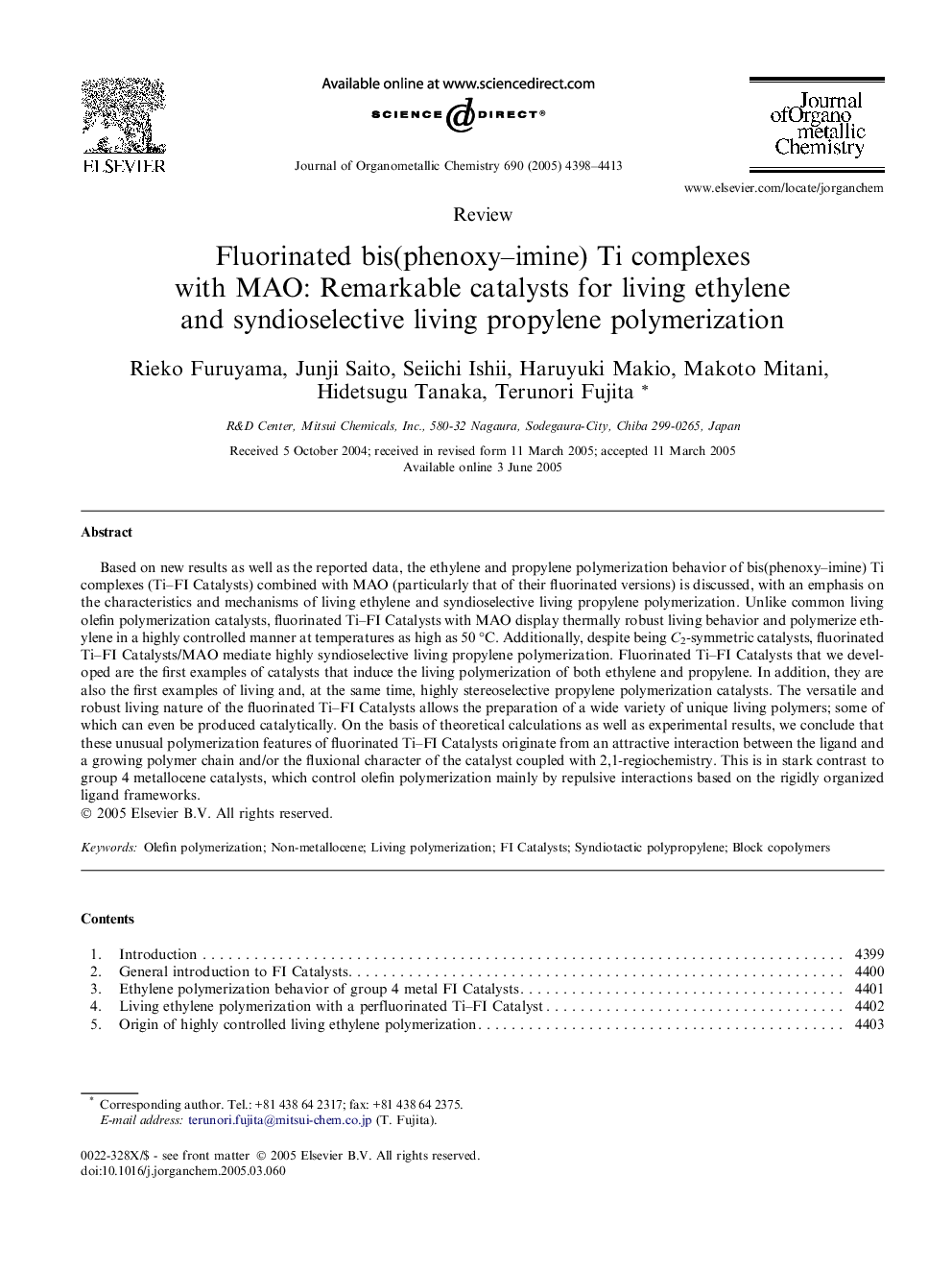| Article ID | Journal | Published Year | Pages | File Type |
|---|---|---|---|---|
| 1324084 | Journal of Organometallic Chemistry | 2005 | 16 Pages |
Based on new results as well as the reported data, the ethylene and propylene polymerization behavior of bis(phenoxy–imine) Ti complexes (Ti–FI Catalysts) combined with MAO (particularly that of their fluorinated versions) is discussed, with an emphasis on the characteristics and mechanisms of living ethylene and syndioselective living propylene polymerization. Unlike common living olefin polymerization catalysts, fluorinated Ti–FI Catalysts with MAO display thermally robust living behavior and polymerize ethylene in a highly controlled manner at temperatures as high as 50 °C. Additionally, despite being C2-symmetric catalysts, fluorinated Ti–FI Catalysts/MAO mediate highly syndioselective living propylene polymerization. Fluorinated Ti–FI Catalysts that we developed are the first examples of catalysts that induce the living polymerization of both ethylene and propylene. In addition, they are also the first examples of living and, at the same time, highly stereoselective propylene polymerization catalysts. The versatile and robust living nature of the fluorinated Ti–FI Catalysts allows the preparation of a wide variety of unique living polymers; some of which can even be produced catalytically. On the basis of theoretical calculations as well as experimental results, we conclude that these unusual polymerization features of fluorinated Ti–FI Catalysts originate from an attractive interaction between the ligand and a growing polymer chain and/or the fluxional character of the catalyst coupled with 2,1-regiochemistry. This is in stark contrast to group 4 metallocene catalysts, which control olefin polymerization mainly by repulsive interactions based on the rigidly organized ligand frameworks.
Graphical abstractTi–FI Catalysts can carry out highly controlled, thermally robust living ethylene and highly syndioselective living propylene polymerizations, stemming from the attractive interaction between the ligand and a growing polymer chain and the fluxionality of an octahedral framework coupled with 2,1-regiochemistry.Figure optionsDownload full-size imageDownload as PowerPoint slide
